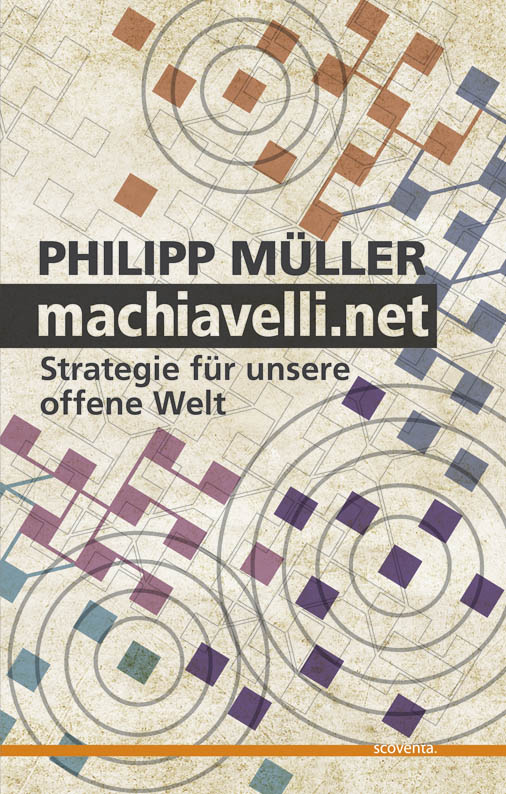Wrapping our minds around “Free”
In October 2004, Chris Anderson developed the concept of the long tail to describe the niche strategy of businesses that sell a large number of unique items, each in relatively small quantities:
the distribution and inventory costs of these businesses allow them to realize significant profit out of selling small volumes of hard-to-find items to many customers, instead of only selling large volumes of a reduced number of popular items. The group that purchases a large number of “non-hit” items is the demographic called the Long Tail (Wikipedia).
It took several years for the strategy to be mainstreamed and there is still a serious debate on its viability, however, most probably in 2009 we will be confronted with another strategy/business model Chris Anderson is working upon: The Power of “Free.”
Kevin Kelly, who has done constitutive theorizing on internet-based societies since before his New Rule for the New Economy, argued in a blog post in early 2008, that if the internet is one enormous copying machine, and if all our economies run on top of it, we need to do better than free. He sees eight generative qualities that add value to free copies, and therefore are something that can be sold:
Immediacy — Sooner or later you can find a free copy of whatever you want, but getting a copy delivered to your inbox the moment it is released — or even better, produced — by its creators is a generative asset. Many people go to movie theaters to see films on the opening night, where they will pay a hefty price to see a film that later will be available for free, or almost free, via rental or download. Hardcover books command a premium for their immediacy, disguised as a harder cover. First in line often commands an extra price for the same good. As a sellable quality, immediacy has many levels, including access to beta versions. Fans are brought into the generative process itself. Beta versions are often de-valued because they are incomplete, but they also possess generative qualities that can be sold. Immediacy is a relative term, which is why it is generative. It has to fit with the product and the audience. A blog has a different sense of time than a movie, or a car. But immediacy can be found in any media.
Personalization — A generic version of a concert recording may be free, but if you want a copy that has been tweaked to sound perfect in your particular living room — as if it were preformed in your room — you may be willing to pay a lot. The free copy of a book can be custom edited by the publishers to reflect your own previous reading background. A free movie you buy may be cut to reflect the rating you desire (no violence, dirty language okay). Aspirin is free, but aspirin tailored to your DNA is very expensive. As many have noted, personalization requires an ongoing conversation between the creator and consumer, artist and fan, producer and user. It is deeply generative because it is iterative and time consuming. You can’t copy the personalization that a relationship represents. Marketers call that “stickiness” because it means both sides of the relationship are stuck (invested) in this generative asset, and will be reluctant to switch and start over.
Interpretation — As the old joke goes: software, free. The manual, $10,000. But it’s no joke. A couple of high profile companies, like Red Hat, Apache, and others make their living doing exactly that. They provide paid support for free software. The copy of code, being mere bits, is free — and becomes valuable to you only through the support and guidance. I suspect a lot of genetic information will go this route. Right now getting your copy of your DNA is very expensive, but soon it won’t be. In fact, soon pharmaceutical companies will PAY you to get your genes sequence. So the copy of your sequence will be free, but the interpretation of what it means, what you can do about it, and how to use it — the manual for your genes so to speak — will be expensive.
Authenticity — You might be able to grab a key software application for free, but even if you don’t need a manual, you might like to be sure it is bug free, reliable, and warranted. You’ll pay for authenticity. There are nearly an infinite number of variations of the Grateful Dead jams around; buying an authentic version from the band itself will ensure you get the one you wanted. Or that it was indeed actually performed by the Dead. Artists have dealt with this problem for a long time. Graphic reproductions such as photographs and lithographs often come with the artist’s stamp of authenticity — a signature — to raise the price of the copy. Digital watermarks and other signature technology will not work as copy-protection schemes (copies are super-conducting liquids, remember?) but they can serve up the generative quality of authenticity for those who care.
Accessibility — Ownership often sucks. You have to keep your things tidy, up-to-date, and in the case of digital material, backed up. And in this mobile world, you have to carry it along with you. Many people, me included, will be happy to have others tend our “possessions” by subscribing to them. We’ll pay Acme Digital Warehouse to serve us any musical tune in the world, when and where we want it, as well as any movie, photo (ours or other photographers). Ditto for books and blogs. Acme backs everything up, pays the creators, and delivers us our desires. We can sip it from our phones, PDAs, laptops, big screens from where-ever. The fact that most of this material will be available free, if we want to tend it, back it up, keep adding to it, and organize it, will be less and less appealing as time goes on.
Embodiment — At its core the digital copy is without a body. You can take a free copy of a work and throw it on a screen. But perhaps you’d like to see it in hi-res on a huge screen? Maybe in 3D? PDFs are fine, but sometimes it is delicious to have the same words printed on bright white cottony paper, bound in leather. Feels so good. What about dwelling in your favorite (free) game with 35 others in the same room? There is no end to greater embodiment. Sure, the hi-res of today — which may draw ticket holders to a big theater — may migrate to your home theater tomorrow, but there will always be new insanely great display technology that consumers won’t have. Laser projection, holographic display, the holodeck itself! And nothing gets embodied as much as music in a live performance, with real bodies. The music is free; the bodily performance expensive. This formula is quickly becoming a common one for not only musicians, but even authors. The book is free; the bodily talk is expensive.
Patronage — It is my belief that audiences WANT to pay creators. Fans like to reward artists, musicians, authors and the like with the tokens of their appreciation, because it allows them to connect. But they will only pay if it is very easy to do, a reasonable amount, and they feel certain the money will directly benefit the creators. Radiohead’s recent high-profile experiment in letting fans pay them whatever they wished for a free copy is an excellent illustration of the power of patronage. The elusive, intangible connection that flows between appreciative fans and the artist is worth something. In Radiohead’s case it was about $5 per download. There are many other examples of the audience paying simply because it feels good.
Findability — Where as the previous generative qualities reside within creative digital works, findability is an asset that occurs at a higher level in the aggregate of many works. A zero price does not help direct attention to a work, and in fact may sometimes hinder it. But no matter what its price, a work has no value unless it is seen; unfound masterpieces are worthless. When there are millions of books, millions of songs, millions of films, millions of applications, millions of everything requesting our attention — and most of it free — being found is valuable.
The giant aggregators such as Amazon and Netflix make their living in part by helping the audience find works they love. They bring out the good news of the “long tail” phenomenon, which we all know, connects niche audiences with niche productions. But sadly, the long tail is only good news for the giant aggregators, and larger mid-level aggregators such as publishers, studios, and labels. The “long tail” is only lukewarm news to creators themselves. But since findability can really only happen at the systems level, creators need aggregators. This is why publishers, studios, and labels (PSL)will never disappear. They are not needed for distribution of the copies (the internet machine does that). Rather the PSL are needed for the distribution of the users’ attention back to the works. From an ocean of possibilities the PSL find, nurture and refine the work of creators that they believe fans will connect with. Other intermediates such as critics and reviewers also channel attention. Fans rely on this multi-level apparatus of findability to discover the works of worth out of the zillions produced. There is money to be made (indirectly for the creatives) by finding talent. For many years the paper publication TV Guide made more money than all of the 3 major TV networks it “guided” combined. The magazine guided and pointed viewers to the good stuff on the tube that week. Stuff, it is worth noting, that was free to the viewers. There is little doubt that besides the mega-aggregators, in the world of the free many PDLs will make money selling findability — in addition to the other generative qualities.
This is probably not the final word, but we clearly need to wrap our minds around the concept. Tomorrow, The Free! Summit will start in San Francisco, it is hosted by Chris Anderson and Mike Masnick (disclosure: I am a member of the techdirt community). It will be interesting to see how the Free paradigm develops. What do you think?
 Author of machiavelli.net, proud father of three, interested in shaping network society. Welcome to my blog.
Author of machiavelli.net, proud father of three, interested in shaping network society. Welcome to my blog.